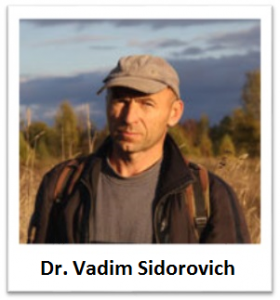
On April 26, 1986, a level 7 meltdown occurred at the Chernobyl nuclear power plant in Pripyat, Ukraine, part of the former Soviet Union. The explosion and subsequent fires released huge quantities of radiation into the surrounding towns and countryside. It was the worst nuclear accident in history, killing 31 and poisoning the surrounding area for decades to come.
For many miles around the plant, terrified residents fled and never returned. After the meltdown was contained, workers were evacuated as well. The area around Chernobyl became a dead zone.
In the thirty years since, the levels of radioactivity diminished. Utterly abandoned, this No Man’s Land reverted to wilderness. Grass sprung up through cracks in the pavement. Buildings were covered in vines. Lawns became meadows, and fields became forests. The region transformed into a sort of post-apocalyptic utopia filled again with songbirds, beavers, bears, deer, rabbits, fish, falcons, wild horses – and wolves.
 The area is still seldom visited by people – mainly by scientists studying the condition of the region. One such scientist is biologist Vadim Sidorovich, who has spent several years studying the wolves that rule the region, and by extension, the ecosystem at large.
The area is still seldom visited by people – mainly by scientists studying the condition of the region. One such scientist is biologist Vadim Sidorovich, who has spent several years studying the wolves that rule the region, and by extension, the ecosystem at large.
Dr. Sidorovich also gave generously of his time to assist me with various aspects of Warwolves, particularly regarding wolf behavior and the history of World War I in the area. He is prominently featured in the excellent PBS Nature documentary Radioactive Wolves. Check it out here.